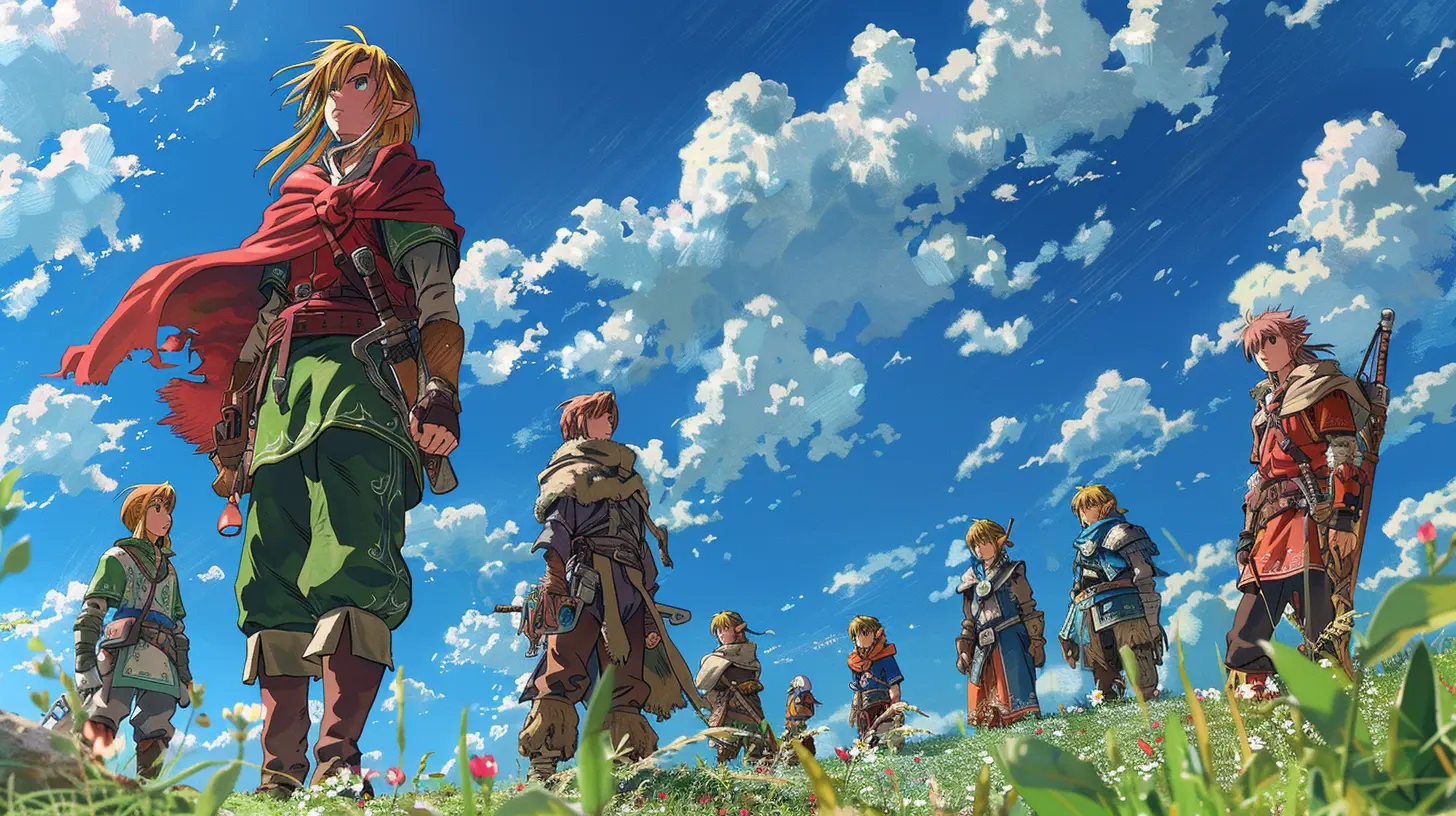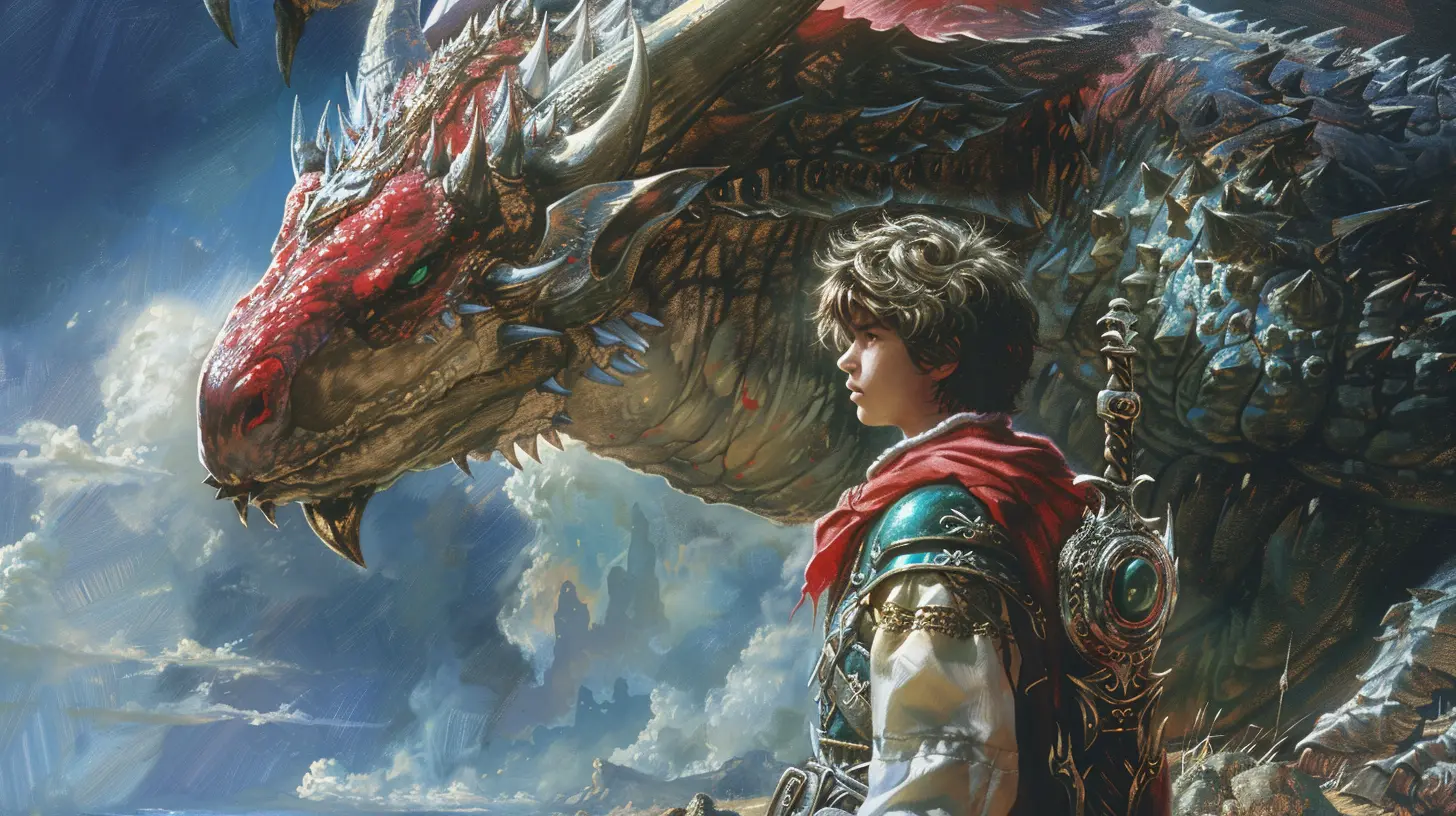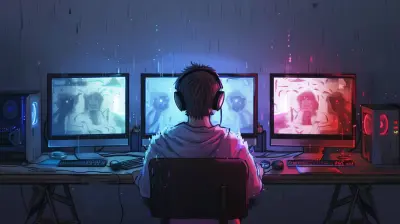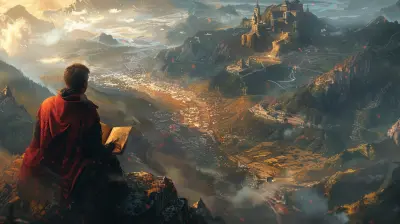The Rise of the JRPG: Stories That Defined an Era
30 August 2025
If you’ve ever spent a lazy weekend glued to your screen battling monsters, collecting potions, and crying over pixelated goodbyes, then you’ve probably fallen under the spell of a JRPG. Japanese Role-Playing Games aren’t just games — they’re interactive novels, epic sagas wrapped up in chibi sprites and turn-based battles.
But how did this genre, born halfway across the world, become such a massive force in gaming? And why do these story-driven games still hold such a tight grip on our gamer hearts? Grab a health potion, we’re taking a deep dive into the golden age of JRPGs and the unforgettable stories that made us laugh, cry, and level grind for hours.
What is a JRPG Anyway?
Let’s start with the basics. JRPG stands for “Japanese Role-Playing Game,” and while that might sound self-explanatory, the genre packs a ton of unique flavor that sets it apart from its Western RPG cousins.Think linear narratives, turn-based combat, party systems, random encounters, and unforgettable characters. Sprinkle in some anime-inspired visuals, emotional storytelling, and sprawling overworld maps, and voilà — you’ve got a JRPG.
But what really makes JRPGs special? One word: story. These games don’t just throw you into a sandbox and say “Go nuts.” They guide you through an emotional rollercoaster, often dealing with heavy themes like identity, loss, sacrifice, and destiny. Now tell me you haven’t cried during a Final Fantasy cutscene. I dare you.
The 8-bit Beginning: JRPGs in the '80s
The JRPG genre didn’t just appear out of thin air — it had humble beginnings, and it all started in the 1980s.Games like Dragon Quest (1986) and Final Fantasy (1987) paved the way. These pixelated treasures were our first tastes of epic storytelling in gaming. Back then, the graphics were simple, the music was bleepy, but somehow, you were hooked.
Dragon Quest was a national phenomenon in Japan. It was so popular that future installments were released on weekends to prevent kids from skipping school. And Final Fantasy? That game was literally Square's last-ditch effort to stay alive — hence the "Final" — but it became anything but final.
These early titles introduced core elements that are still seen in modern JRPGs: overworld exploration, battle mechanics, magic systems, and NPC-driven side quests. Not bad for a few kilobytes of data, huh?
Cue the Dramatic Music: The ’90s Golden Age
Ah, the ’90s. Flannel shirts, tamagotchis, and what many consider the golden age of JRPGs. This era gave us some absolute masterpieces that weren’t just games — they were emotional gut punches.Let’s talk about the big ones.
Final Fantasy VI (1994)
Before Cloud picked up his iconic Buster Sword, Final Fantasy VI showed us that JRPGs could be serious art. This game was dark, dramatic, and wildly ambitious for its time.How often do you play a game where the bad guy actually wins halfway through? Kefka, the villain, literally becomes a god and destroys the world. You’d think that’d be a game over. Nope — it's only the halfway point.
Chrono Trigger (1995)
Developed by the dream team of designers from Final Fantasy, Dragon Quest, and Akira Toriyama (yes, the Dragon Ball guy), Chrono Trigger was like the Avengers of JRPGs.Time travel, multiple endings, a silent protagonist named Chrono — and don’t even get me started on that heartbreaking scene with Robo and the forest.
It was innovative as heck and still holds up today. If you haven’t played it, what are you even doing with your life?
Suikoden II (1998)
Ever wanted to recruit 108 characters? Suikoden II made that dream a reality. This game blended politics, war, betrayal, and brotherhood into one unforgettable package.It didn’t get as much love as Final Fantasy or Chrono Trigger, but real JRPG fans know — Suikoden II is golden.
Final Fantasy VII: The Game That Changed Everything
We can’t talk about the rise of the JRPG without spotlighting Final Fantasy VII. Released in 1997, this game wasn’t just a game. It was a cultural event.It had everything — a moody protagonist, a flower girl, a silver-haired villain with mummy issues. And that moment… yeah, THAT moment. You know the one. (RIP Aerith. We’re still not over it.)
Final Fantasy VII was the first JRPG many Western gamers ever played, and it blew people’s minds with 3D graphics, CGI cutscenes, and a sprawling, emotional story.
It didn’t just define a genre — it helped JRPGs break big in the West, making them a global phenomenon.
Xenogears, Star Ocean, and the Underdogs
While Final Fantasy stole the spotlight, the late '90s and early 2000s saw the rise of cult classics that pushed storytelling in wild new directions.Xenogears (1998)
Imagine if Sigmund Freud, giant mechs, and a ton of existential dread had a baby. That’s Xenogears.This game is dense — we’re talking Bible references, Jungian psychology, and a thousand plot threads. It’s weird, it’s deep, and it’s amazing.
Did it have trouble sticking the landing due to budget constraints? Sure. But fans still debate its themes to this day.
Star Ocean: The Second Story (1998)
Spaceships and swords? Count me in. Star Ocean combined sci-fi and fantasy in a way few JRPGs dared to do. Its real-time battle system and branching storylines gave players more freedom, and the result was a game that felt fresh in a crowded genre.Persona Series: High School Never Looked So Cool
Fast forward to the 2000s, and the Persona series started to rise like a stylish phoenix from the ashes.Originally a Shin Megami Tensei spin-off, Persona mixed monster fighting with dating sim mechanics. Yeah, you heard that right.
But it wasn’t until Persona 3 (2006) and especially Persona 5 (2016) that the series hit mainstream fame.
You fight shadows by night and go to school by day. You manage friendships, take exams, and occasionally dive into psychological dungeons. It’s like if Sailor Moon and The Breakfast Club had a game baby.
Persona spoke to a new generation of gamers — one that craved style, emotional depth, and social sim elements.
Tales of… Everything!
Can we give a round of applause to the Tales of series?From Tales of Symphonia to Tales of Arise, this long-running series never gets enough credit. Its real-time combat, likable characters, and anime-inspired storytelling kept the JRPG flame alive while other series went dormant.
It may not grab headlines like Final Fantasy, but Tales fans know: this series has heart.
The Evolution of the JRPG: Modern-Day Magic
So where are we now?JRPGs have evolved, no doubt. We’ve moved from turn-based to action-heavy gameplay (hello, Final Fantasy XV), and some stories have doubled down on realism and moral ambiguity (NieR: Automata, anyone?).
But at their core, JRPGs are still about one thing: the story.
We’re still chasing that emotional high. Still leveling up to save the world. Still crying when our favorite character sacrifices themselves for the greater good.
And with modern masterpieces like Final Fantasy VII Remake, Xenoblade Chronicles 3, and Persona 5 Royal, it’s clear — the genre isn’t just surviving. It’s thriving.
Why We Keep Coming Back
There’s something timeless about JRPGs. Maybe it’s the turn-based comfort, or the classic “band of misfits saves the world” plot. Or maybe it’s the nostalgia, the pixelated music, the 60-hour stories that make us forget the real world for a bit.Whatever the reason, these games stick with us.
They teach us about bravery, friendship, sacrifice, and love — not bad for a bunch of code and art assets, right?
JRPGs didn’t just define an era. They defined us.
Wrapping It Up (And Taking a Victory Pose)
Whether you started with Dragon Quest on the NES or got hooked by Persona on the PS5, the legacy of JRPGs runs deep. They’re more than games; they’re journeys. And if you’ve ever stayed up until 3 AM just to finish “one more dungeon,” you know exactly what I mean.So here’s to the heroes, the heartbreaks, the epic soundtracks, and the stories that defined an era. The JRPG isn’t just a genre. It’s a feeling.
And that feeling? It’s here to stay.
all images in this post were generated using AI tools
Category:
Retro GamesAuthor:

Greyson McVeigh
Discussion
rate this article
1 comments
Dana Wilkerson
JRPGs didn't just rise; they revolutionized storytelling in gaming. With rich narratives, complex characters, and emotional depth, they forged a lasting legacy that continues to inspire. It's time to recognize these masterpieces as the cornerstone of the gaming world.
October 4, 2025 at 4:08 PM

Greyson McVeigh
Absolutely, JRPGs have indeed transformed gaming narratives, setting a standard for storytelling that resonates today. Their impact is undeniable and continues to shape the industry.


